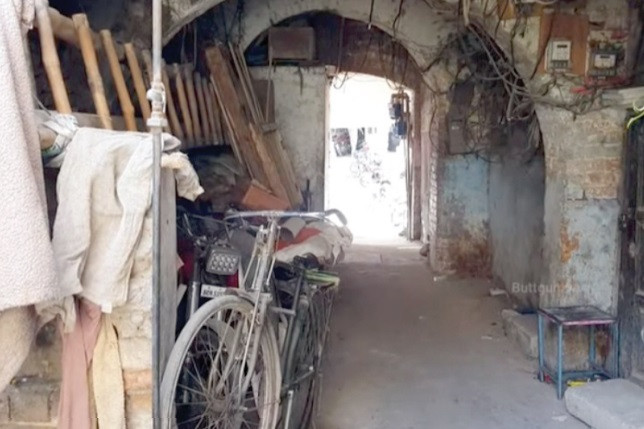
Though the garrison city still sings its diverse and multi-religious past, its character changed wholly when almost all of its Hindu and Sikh population left for India after partition, leaving behind public rest houses, inns, temples and gurdwaras only to be occupied and grabbed by various groups.
The historical Hindu Inn on Rawalpindi’s College Road is one such old building that is bearing the brunt of utter negligence, showing signs of complete wear and tear with half of the three-storey building under adverse occupation.
Currently, dozens of poor Muslim families are living in the three-storey inn established in 1929 on College Road near Colonel Maqbool Imambargah. The entrance corridor of the main entrance to the hall has been occupied by several families. In the past, the Hindu inn used to provide shelter and food to Hindu caravans and religious travellers.
The building has lost its glory due to a lack of proper maintenance. An inscription is still visible on the arch of the main door of the guest house, according to which the Hindu guest house was built in 1929. Its original name is 'Dahrampura Baraye Hindu Mussafir'(An inn for Hindu travellers). A Hindu philanthropist Lala Shankar Das had established the building only for Hindu religious travellers.
People of the area said that there used to be two big temples named Des Raj Mandir and Sheri Radha Mandir in front of the guest house before the partition. A large number of Hindus from across the sub-continent used to visit the temples to worship. The purpose of the construction of the guest house in front of the temples was to provide free food and accommodation to Hindu travellers.
The entire building of the guest house has four arches. The main entrance leads to the stairs and upper floors but an ancient door has been locked to stop entry to various floors. An ancient plaque is installed on the premises adjacent to the building mentioning a date of April 18, 1932. According to the inscription, the inn was built purely for travellers visiting the now extinct temples.
A committee used to manage the expenses and maintenance of the guest house. It is written on the plaque that Hindu travellers could stay only for three days and seeking permission from the committee was mandatory for a prolonged stay. While the income from the guest house was spent on the food and other expenses of Hindu travelers and the repair of the guest house.
After the partition, almost all Hindus left the area and migrated to India, leaving the guest house at the mercy of the occupiers. Though the locals said the Hindu guest house is owned by the Awqaf Department, dozens of families have occupied a portion of the building. The locals claimed that the occupants pay a monthly rent to the Awqaf Department. Muhammad Ashraf, a resident of the area, said that the splendour of the architecture still manifests today but over time, it lost its glory.

1732063440-0/elon-(3)1732063440-0-405x300.webp)

1732062434-0/elon-(2)1732062434-0-165x106.webp)


1732011525-0/Express-Tribune-(8)1732011525-0-270x192.webp)


1732012115-0/Untitled-design-(14)1732012115-0-270x192.webp)











COMMENTS
Comments are moderated and generally will be posted if they are on-topic and not abusive.
For more information, please see our Comments FAQ